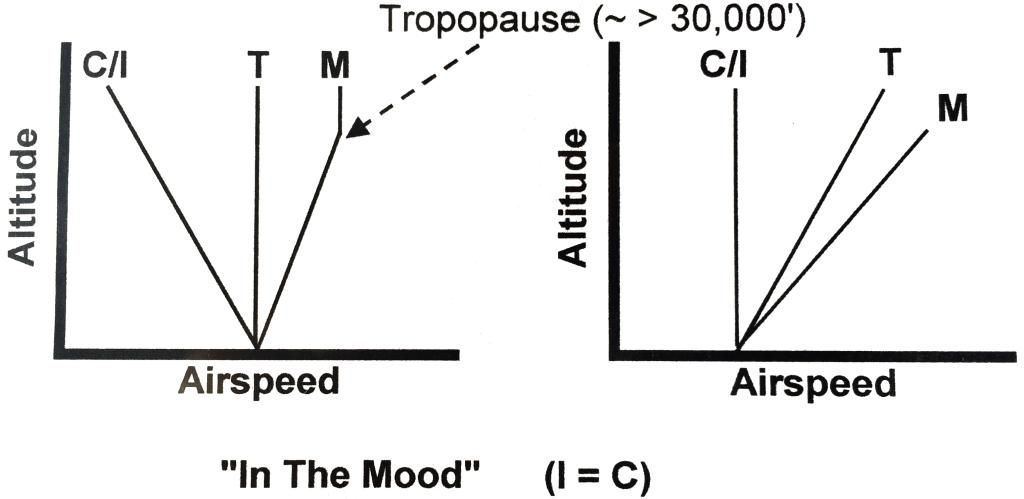Compass updates
#6502
It's true your AOA increases with altitude, but in the context of this question... May be underthinking this, but would your angle of attack decrease in speed mode so as to maintain the same speed in the climbout? That's why you occasionally need to reduce the speed or go to VS as you near your level-off - to get the nose back up.
#6503
Gets Weekends Off
Joined APC: Jan 2015
Position: E-175
Posts: 458
It's true your AOA increases with altitude, but in the context of this question... May be underthinking this, but would your angle of attack decrease in speed mode so as to maintain the same speed in the climbout? That's why you occasionally need to reduce the speed or go to VS as you near your level-off - to get the nose back up.
But yes, I correct myself. (late night half asleep thinking got me on my response last night)
IAS and CAS decrease, TAS decreases (if temp decreases). FAA Pilots Handbook of Aeronautical Knowledge. See this link, top right paragraph of page 4-41 if it doesnt show it right away.
The question remains in my mind about the AOA. Assuming constant weight (obviously not possible) As TAS and IAS/CAS decrease, AOA would need to decrease to keep speed up as airspeed falls off. However, I dont know how significant fuel burn adds complexity to this. Maybe its near constant
https://books.google.com/books?id=1H...%20aoa&f=false
#6504
Gets Weekends Off
Joined APC: Feb 2007
Position: FO
Posts: 3,044
As speed decreases, AOA will need to increases to maintain the same amount of lift.
If airspeed is constant and all the changes is altitude. A higher altitude will require a higher AOA, due to the density of air changing.
If airspeed is constant and all the changes is altitude. A higher altitude will require a higher AOA, due to the density of air changing.
#6505
Gets Weekends Off
Joined APC: Feb 2007
Position: FO
Posts: 3,044
It's true your AOA increases with altitude, but in the context of this question... May be underthinking this, but would your angle of attack decrease in speed mode so as to maintain the same speed in the climbout? That's why you occasionally need to reduce the speed or go to VS as you near your level-off - to get the nose back up.
The thing that governs climb rate in an aircraft is excess thrust available over that is required for level flight at a given speed.
The reason you may have to reduce speed in a climb up to altitude is that the thrust available is insufficient to maintain your desired climb rate, altitude, and airspeed at the same time.
#6508
Line Holder
Joined APC: May 2013
Posts: 52
FWIW, nobody will ever, ever, ask you that Mach question outside of the test.
Not on your interview. Not in training. Not on IOE. Not on the line. Not in recurrent. Not ever. :-)
Keep it above green dot, below V/MMO and you'll be fine.
Not on your interview. Not in training. Not on IOE. Not on the line. Not in recurrent. Not ever. :-)
Keep it above green dot, below V/MMO and you'll be fine.
#6509
China Visa Applicant
Joined APC: Oct 2006
Position: Midfield downwind
Posts: 1,930
You guys are seriously over-analyzing this question. Simple picture to give you a simple answer, regardless of how the question is asked:


#6510
Line Holder
Joined APC: Feb 2011
Posts: 57
What time does the 1 day orientation usually end at? For knowledge of looking at return flights home that same day?
Thread
Thread Starter
Forum
Replies
Last Post





